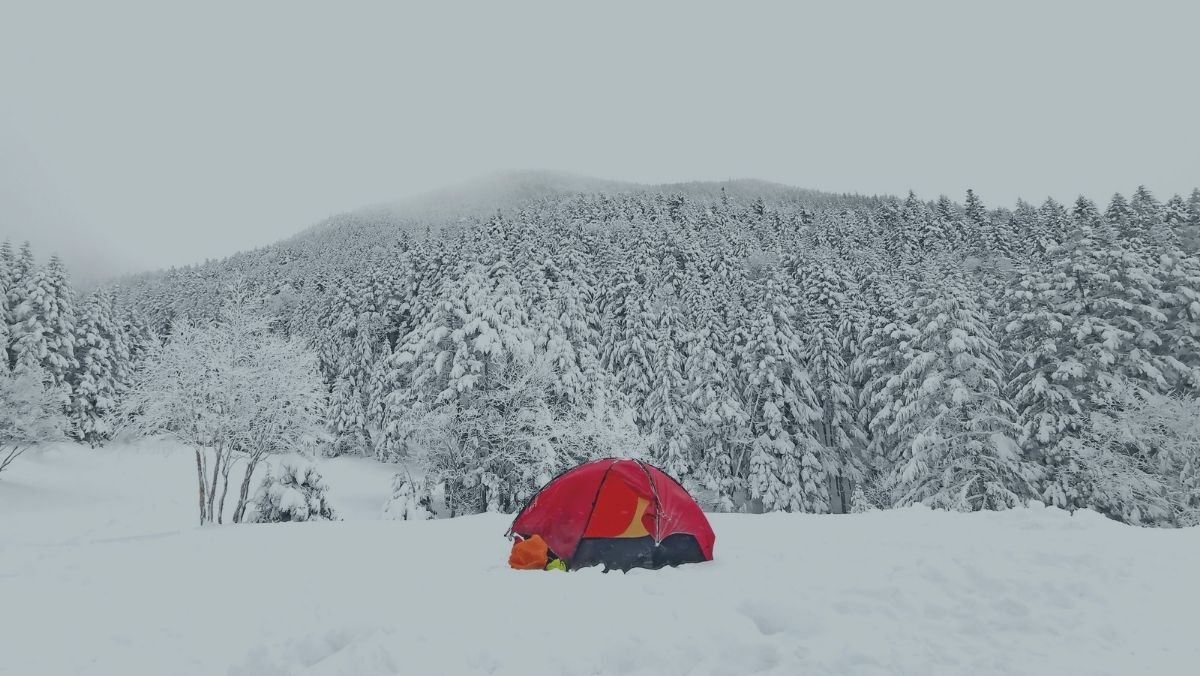When camping during the winter months, frigid conditions can make sleeping at night in a tent difficult.
Learning how to insulate a tent for winter camping can be a challenge, but there are many methods you can use to keep the cold at bay and make your tent a warm and cozy oasis.
The following tips and tricks will help you insulate your tent from top to bottom and keep you comfortable during those cold winter nights.
The Principle Behind Tent Insulation
The whole point of learning how to insulate a tent is to keep in as much warmth as possible while keeping out the cold as much as you can. The main way to do this is to place a barrier between where the warmth is and where the cold is.
During the summer months, the fabric of the tent is enough of a barrier to keep out cooler night air, but during the winter, the situation is more complicated.
In the winter, campers have to contend with more than just cold wind. Sustained cold temperatures also freeze the ground, making the soil a gigantic ice block that sucks the warmth out of anything placed on it. Heat rises, so any heat generated within the tent will quickly dissipate into the cold air through the top vent.
Campers may also have to contend with considerable snow accumulation during their trip. All of these conditions raise the risk of hypothermia, a dangerous drop in core body temperature that can be fatal if not addressed quickly.
Learning how to insulate a tent is mostly about memorizing different ways to create barriers to the cold both outside and inside. Some of the techniques require finding the right spot while others require having the right materials.
Here are some of the best ways to insulate a tent.
Making The Right Tent Choices
4-Season Tents Are Best For Winter Camping
While most tents are designed to be used in the spring, summer, and fall months, a 4-season tent is designed to also be used during the winter when cold and snow abound. 4-season tents are specially constructed with thick insulating materials on all of the walls and the roof of the tent.
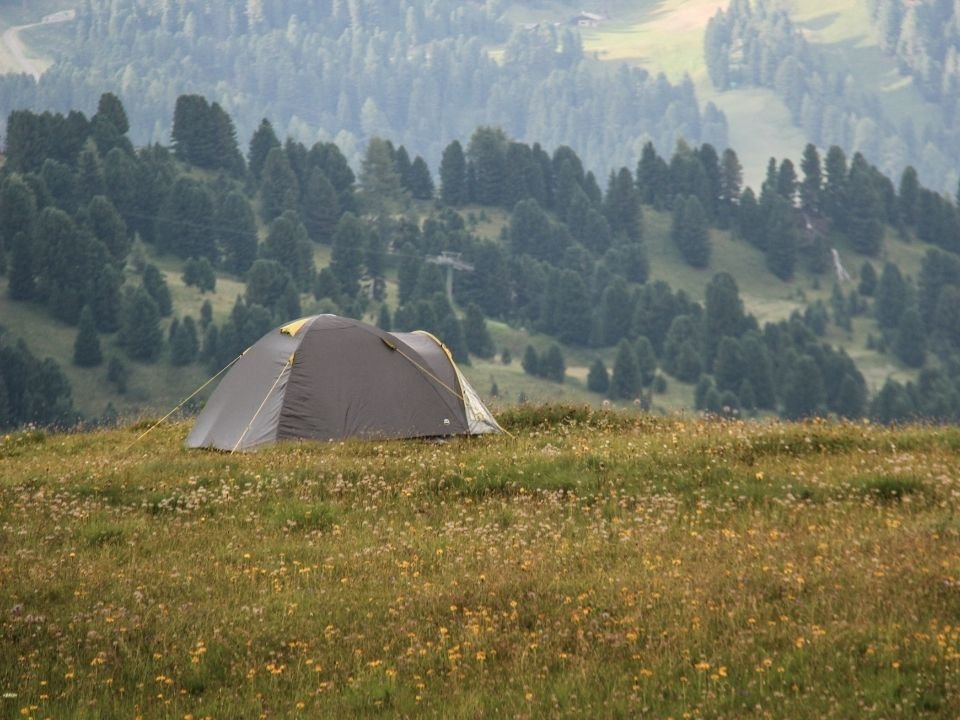
They also have thicker fabrics on the inner body and a thicker bottom than other types of tents. These materials help thermally insulate the tent from the cold in the air and coming from the ground.
Minimize Your Tent Size
While camping in the winter, you should choose the smallest tent size that will fit your needs for the trip.
While having a larger tent gives you extra storage space for your gear, it also means that you have more area to insulate and more empty space to keep warm. A smaller space that is adequately insulated will keep you warmer for longer with less effort.
Consider A Rooftop Tent
Rooftop tents are less common than tents that are pitched on the ground, but they have some features that make them a good choice for winter camping.
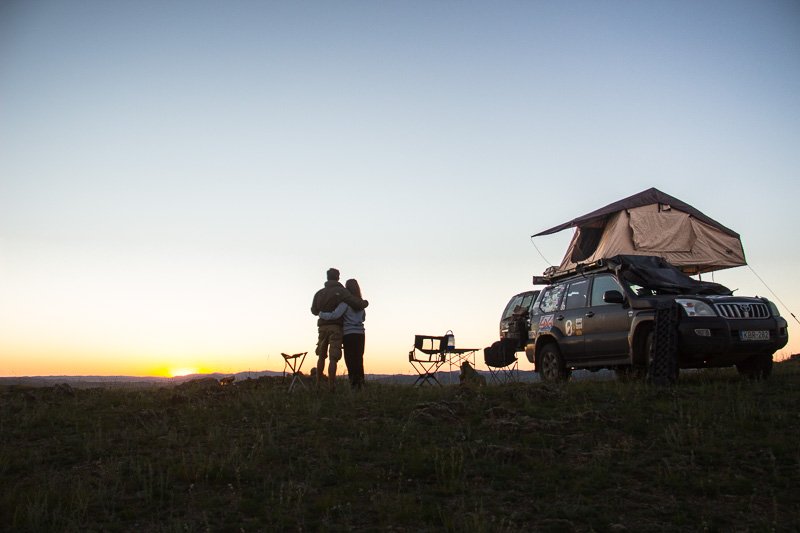
Rooftop tents are designed with extra insulation in the base that is formed out of multiple sheets of insulating material, forming a thick protective layer.
With a rooftop tent, there is no need to clear the ground of snow or lay materials beneath the tent as additional insulation.
Choosing The Right Location
Utilize Natural Windbreaks
A natural windbreak is an element of nature that provides shelter from the wind coming from a certain direction. There are many different types of natural windbreaks, including stands of trees, rock formations, and clusters of bushes.
Placing your tent near one of these natural windbreaks lessens the work you will need to do to provide adequate wind protection for your tent.
Use Tarps For Wind Blocking
The camping site that you choose should also have a couple of trees nearby that you can use to put up a tarp to block the wind.
A heavy-duty tarp suspended by a rope from the trees can be a powerful windbreak to protect your campsite from the prevailing winds and reduce the amount of cold air swirling around your tent. Make sure that the tarp you choose has tough grommets so there is less of a chance of it ripping free in strong winds.
Protect Your Tent With A Wall Of Snow
In snowy conditions, a wall of snow around your tent can create an adequate windbreak from blustery winds. The wall of snow should be at least three feet high and should be compacted with your camp shovel during construction for increased strength.
The wall of snow will also prevent drifting snow from collecting against the side of the tent at night.
Insulating The Tent From The Air
Top The Tent With A Blanket
Putting a thermal blanket over the top of the tent as an insulating layer is a good way to prevent heat from escaping through the fabric of the roof of the tent. This will ensure that most of the body heat generated while you are sleeping at night will remain inside the tent, warming the interior air.
The blanket will also prevent the formation of snow, frost, and dew on the tent roof overnight. For the best results, choose a blanket made from waterproof materials.
Use Insulating Fabrics To Line The Interior
Lining the interior of the tent with insulating fabrics is another good way to keep the cold out during your camping trip.
While some people who camp in extreme conditions choose to use insulating paneling from a neighborhood hardware store for this use, the weight of the paneling is prohibitive if it is not needed to mitigate the life-threatening cold. In most cases, simply duct-taping a space blanket around the interior of the tent is enough protection from the cold outside.
Insulating The Tent From The Ground
Clearing The Campsite
Pitching your tent on top of snow is just asking for all of the warmth to be leached out of the tent at night. Snow also melts as the tent floor becomes warmer, turning the ground under the tent into an icy, muddy mess.
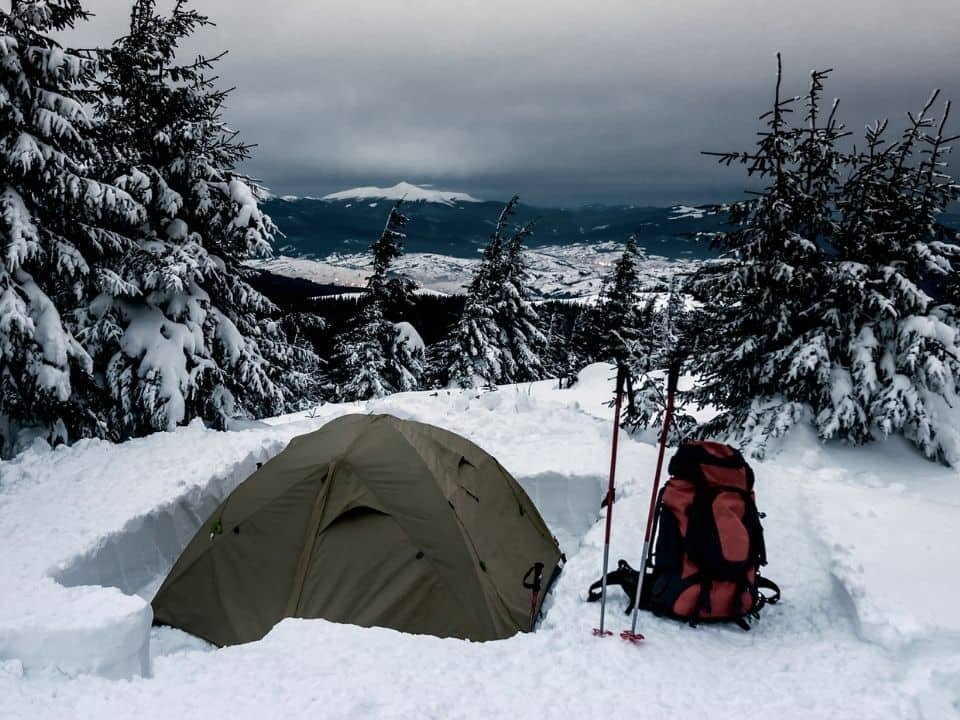
The snow should be thoroughly removed from your campsite before the tent is erected to prevent this and increase your comfort. Choosing a flat spot on camp will make this task easier.
Utilize A Groundsheet Or Tent Footprint
One of the most effective ways to insulate your tent from freezing cold ground is to put a groundsheet or tent footprint between the ground and the bottom of your tent.
Some manufacturers make tent footprints specifically for their tent models, but using a heavy-duty waterproof camping tarp as a groundsheet can be nearly as effective.
Make sure that the entire floor of the tent will fit on top of the ground covering, but it should not extend past the edges of the tent or melted snow will be able to make its way between the cover and the tent floor.
Use Leaves As Insulation
If you are camping in a wooded area and the ground is not covered in snow, you can use fallen leaves to create insulating padding for the bottom of your tent.
Dry leaves can be used to create a raised bed beneath the tent and piled around the sides of the tent to create another barrier to the cold air. Wet leaves should not be used as the moisture freezing and thawing could cause issues with the tent.
Pad The Tent Floor
Using padding on the floor of the tent is another effective method to keep the cold winter ground from interfering with your sleep.
In addition to making the tent floor more comfortable, the padding will minimize the heat transfer from the tent to the ground, keeping the tent warmer for longer periods.
Cover The Floor With A Rug Or Carpet
A tent rug or tent carpet can be used to line the floor of the tent to provide additional insulation during winter camping. Your tent carpet can be sections of old carpet from your home or a carpet remnant purchased from your local home improvement store.
Having a tent rug or carpet that is a little larger than the floor of the tent will allow you to go up the walls a few inches to block any drafts that may come in.
Additional Tips For Keeping Warm During Winter Camping
Take A Tent Heater
Cold winter weather may be too much for simple insulation to overcome, so having a tent heater available for those cooler nights is a good idea.
There are many different types of gas-powered and electric tent heaters available, so it should be easy to find one that fits your needs. Make sure you follow all of the safety instructions for your particular tent heater to prevent an avoidable tragedy from occurring.
Choose The Right Sleeping Bag
Another way to ensure that you stay warm and toasty on a cold winter night is to have a sleeping bag that is specifically rated for cold temperatures.
Many sleeping bags rated for freezing temperatures are designed in the “mummy” style – a slightly tapered shape cut to resemble a human body with a sculptured drawstring hood that can be closed to keep in the warmth.
Choose one made out of heavy-duty material with thick insulation and an interior large enough to add heat packs if necessary.
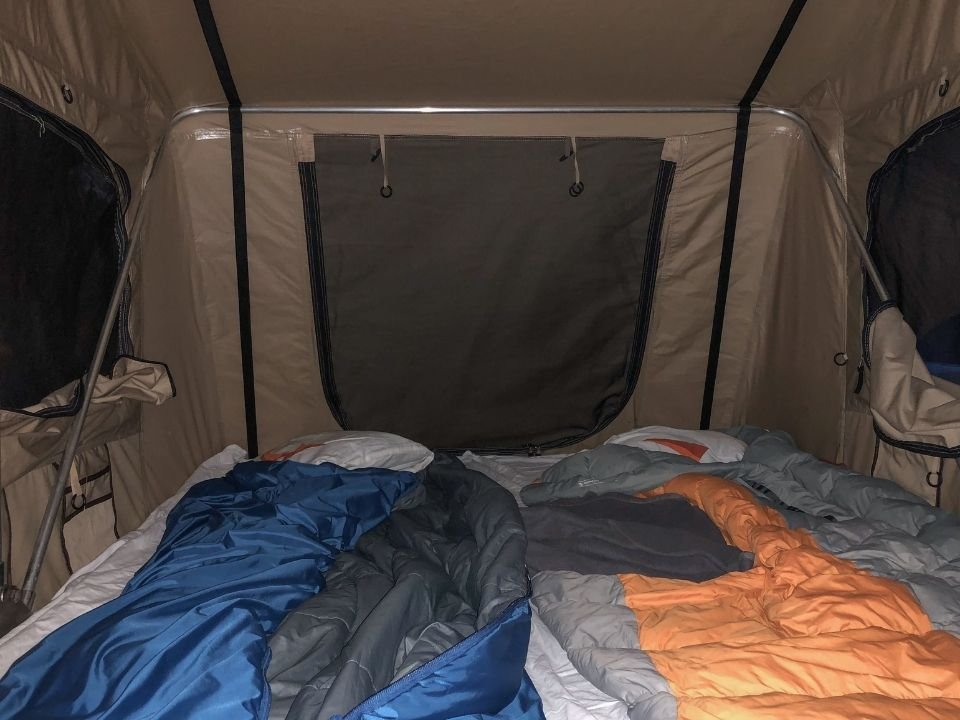
Invest In Some Good Heat Packs
Heat packs are an effective way to warm the air in small areas, like the interior of a sleeping bag or a coat pocket. Most of them can be activated with a shake and can be used multiple times before their heat is expended.
Heat packs for winter camping can be found at local sporting goods stores and at online retailers that sell camping gear.
Dress In Layers
Dressing in layers has long been touted as one of the best ways to stay warm and comfortable in winter weather. Start with a layer of thermal clothing close to trap body heat and keep it close to the skin.
This should be followed with thinner clothing like shirts and leggings under thicker clothing like thick pants and sweaters. It is important to avoid tight-fitting clothes or wearing so many clothes that you begin to sweat, as this could cause additional complications in cold weather.
You should also wear something on your head, like a knit cap, to reduce the amount of body heat lost through the top of the head.
Minimize The Space Between The Bed And The Tent Floor
Another important tip for staying warm during winter camping is to minimize the amount of space between the floor of the tent and where you will be sleeping. A raised bed, like a cot, will allow cool air to circulate between the bed and the floor, transferring heat with the air currents.
Keeping your sleeping area on the floor using sleeping pads or an air mattress will insulate you better from the cold and keep you more comfortable during the night. If you are camping with another person, you should sleep close together for additional warmth.
Closing Thoughts
Although we were focusing on winter camping in the above article, most tips actually work on the opposite end of the weather scale. Use the above method to keep yourself cool while camping during the summer too!

